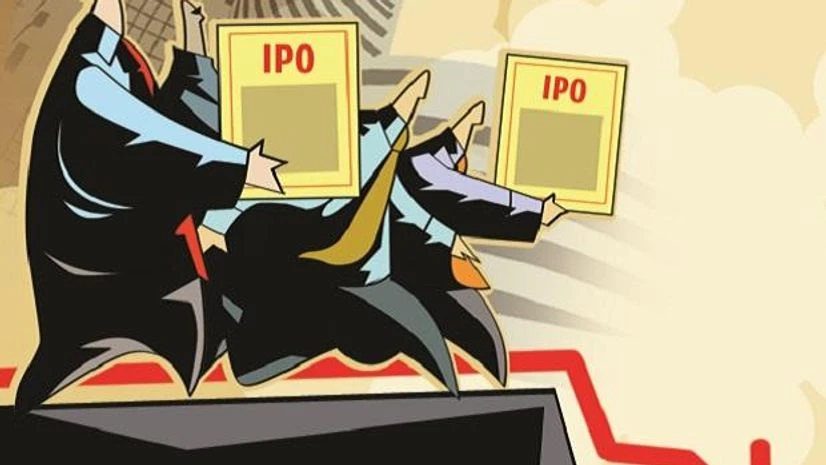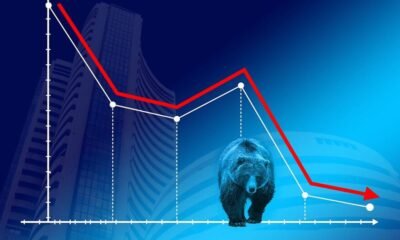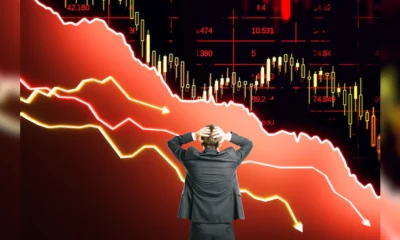The Indian stock market is experiencing a bloodbath, with a brutal selloff hammering some of the most prized stocks, plunging them as much as 71% from their peaks. This massive downturn is shaking investor confidence and raising critical questions- is this the time to buy, sell, or hold? And more importantly, will the IPO frenzy that gripped the markets in the past years come to a screeching halt in 2025?
The Stock Market Carnage
A massive exodus of foreign institutional investors (FIIs), driven in part by Trump’s ‘America First’ push, has led to billions of dollars leaving the Indian stock market. This has resulted in a liquidity crunch, forcing mutual funds to rethink their usual strategy of buying the dips. Now, with liquidity drying up, that safety net is beginning to fray.
The selloff is indiscriminate, impacting blue-chip and small-cap stocks alike. Out of 528 stocks with a market capitalization of at least $1 billion (₹8,700 crore), a staggering 412 have plunged at least 20% from their highs. Worse still, 19 of these stocks have nosedived between 50% and 71%, wiping out billions in investor wealth.
Even Reliance Industries, India’s most valuable company, has not been spared. The stock recently hit a 52-week low, shedding a quarter of its value. This downturn is particularly alarming for those who believed India’s bull run would withstand global headwinds.
Retail Investors at the Crossroads
The behavior of retail investors over the next few weeks or months will likely determine the trajectory of the Indian stock market. Data shows that retail investors tend to buy at higher levels and are often caught in the trap of buying overvalued stocks. With the market correction now in full swing, the ‘breaking point’ for these investors may be closer than anticipated.
For the past 9–12 months, retail investors, along with domestic institutional investors, have continued to buy aggressively, keeping valuations elevated. Now, as stocks tumble, many investors are left wondering whether to cut their losses or wait for a potential rebound.
Analysts suggest that this is a good time to switch from mid- and small-cap stocks—which remain overvalued despite the correction—to large-cap stocks, which now offer fair valuations.
)
Will IPO Euphoria Fizzle Out in 2025?
The primary market, which has been on fire for the last two years, is also beginning to feel the heat of the stock market rout. With increasing concerns over high valuations, extreme volatility, and global economic uncertainty, market experts believe that the IPO boom may not last much longer.
According to an E&Y Global IPO trends survey, India’s participation in global IPO listings rose from 17% in 2023 to 30% in 2024, making it the top contributor to primary resource mobilization worldwide. However, 2025 is expected to be a tougher year, with subdued investor enthusiasm.
The Offer for Sale (OFS) Conundrum
One of the key reasons for the fading enthusiasm in the IPO market is the increasing reliance on Offer for Sale (OFS) issues. In an OFS, existing shareholders—typically promoters or private equity investors—sell their stakes, and the company itself does not receive any new funds for growth. Investors tend to dislike OFS-based IPOs because they do not contribute to business expansion.
A prime example is the Hyundai Motor India IPO, which was structured as a complete OFS. The parent company, Hyundai Motor, offloaded 14.2 crore shares, but the company itself gained nothing from the proceeds. This model has led to poor participation from retail investors, with institutional buyers stepping in at the last moment to salvage the issue. Similarly, the Ajax Engineering IPO was fully subscribed but relied heavily on Qualified Institutional Buyers (QIBs), and the Hexaware Technologies IPO is facing similar difficulties.
The Hesitancy to Invest. Secondary Market Woes Spill Over
Another reason for the decline in IPO participation is the heavy losses investors are facing in the secondary market. With existing portfolios bleeding, investors are hesitant to commit fresh funds to the primary market. Additionally, the once-booming grey market, which used to provide a fair indication of potential listing gains, is no longer offering the kind of reassurance investors seek.
According to Kejriwal, a market veteran, the reluctance to make new commitments has led to lower IPO subscriptions, and unless sentiment improves, this trend will persist.
What Lies Ahead for the IPO Market in 2025?
The year has started with a ‘perfect storm’—high valuations, market volatility, and economic uncertainties—all of which have dampened investor enthusiasm. Recent political and economic events have finally curbed the irrational exuberance that had inflated stock prices for years.
Market experts predict that the low subscription numbers are just the beginning. Many upcoming IPOs may struggle to attract even a 1x subscription in the coming months, signaling deeper pain ahead for the primary market.
Will the IPO Market Revive?
For the IPO market to stage a comeback, two critical changes need to happen –
- Better Valuations: Companies will have to price their IPOs more attractively to entice investors. The days of inflated valuations are over, and investors will only commit to new offerings if they see genuine value.
- Reduced OFS Reliance: Investors prefer companies that use IPO proceeds for expansion rather than allowing promoters and private equity firms to cash out. The primary market must focus on raising fresh capital for business growth to regain investor trust.
The Last Bit
Is It Time to Buy or Sell?
Given the current market conditions, a cautious approach is warranted. While small- and mid-cap stocks remain overvalued despite the correction, large-cap stocks now offer better value. Investors should focus on quality businesses with strong fundamentals rather than chasing momentum trades.
As for IPOs, 2025 is shaping up to be a challenging year. Until valuations cool down and companies move away from OFS-based listings, the IPO market is likely to remain tepid.
For now, the bear party has just begun. Investors should brace for a tough year ahead and adopt a well-researched, long-term approach to investing.


)





